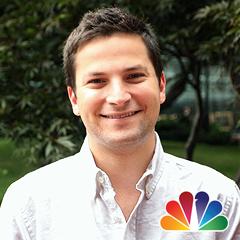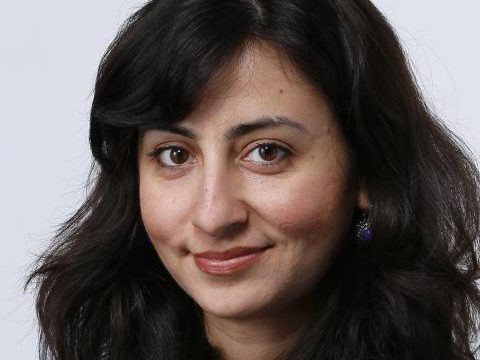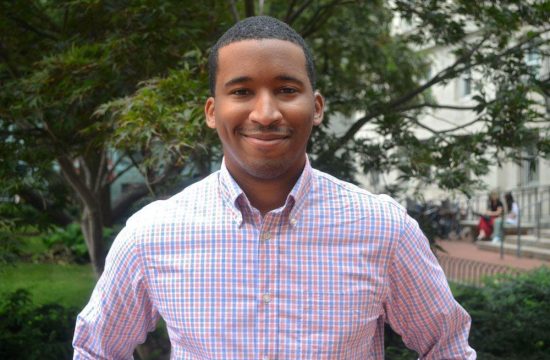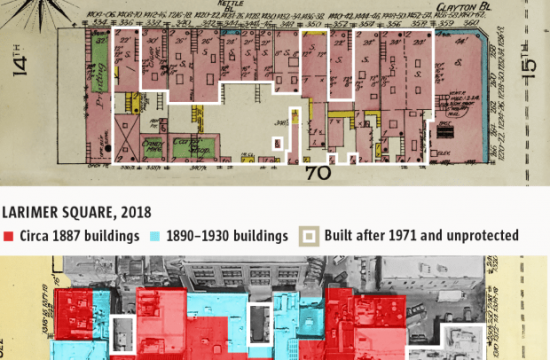Breaking News Emails
Get breaking news alerts and special reports. The news and stories that matter, delivered weekday mornings.
/ Updated
By Elizabeth Chuck and Shako Liu
IRVINE, Calif. — Ted Wood, a Sacramento, California, attorney, signed up for Ancestry in 2013, hoping to find his father.
Wood, 50, had met his birth mother in the 1990s — a woman who placed him for adoption after getting pregnant while in high school. But his biological father had seemingly vanished.
He spit in a vial and sent it off to Ancestry. The married father of three was unaware that around the same time, a growing number of people were using commercial DNA test kits to make a different type of connection: people conceived with donated sperm meeting their sperm donors.
Wood had donated sperm when he was a college student. It was a quick way to earn $100 in an afternoon, and the clinic promised donors anonymity. By the time he signed up for Ancestry almost three decades later in search of his birth father, he had forgotten entirely about his college side gig.
He found some distant relatives on the site over the years, and when Ancestry notified him in April 2018 of a new connection in the database, he assumed it was another far-flung cousin.
But this time, the message was different: He had matched with a daughter he didn’t even know existed.
“That was kind of a shock sitting at my desk,” Wood said.
Stunned and certain there was a mistake, Wood did not reply.
‘I JUST WANTED ANSWERS’
Meanwhile, in Arlington, Texas, Melissa Daniels, 27, was getting antsy.
Daniels had found out when she was a teenager that her mother conceived her using a sperm donor. After wondering for years about his identity, Daniels joined Ancestry last spring. A month later, she received a notification that Wood was almost certainly her biological father.
She sent him a message, saying she hoped she wasn’t bothering him, but she wanted to thank him for the donation he made all those years ago.
She received no response. So she sent another message, with more details about herself.
“I felt urgency to message him because I didn’t know anything about him or what he was like, if he expected to be found by any offspring or what was going on,” Daniels, an English as a second language tutor and mother of two young children, said. “I kind of freaked out.”
The father who raised Daniels died when she was 7. Learning from her mother when she was 14 that he hadn’t been her biological dad was heartbreaking.
“I just wanted answers,” Daniels said. “I wanted confirmation that I was donor-conceived.”
After she reached out to Wood, days that felt like weeks went by.
Finally, after a disbelieving Wood told his wife about the messages, he collected his thoughts and wrote back.
Initially, Wood and Daniels shared just basic biographical details — he was hesitant and she was nervous. But their exchanges soon warmed up, as they discovered shared opinions on everything from politics to Monty Python. They began talking about meeting in person, but life was busy and they lived 1,700 miles apart.
Then, in December, Daniels’ mother died of complications from cerebral palsy. The idea of meeting Wood took on new weight.
“I was kind of bitter about the situation,” she said of losing both parents who raised her. “This is what I’m left with.”
While Wood was clear that he did not see himself as a father figure to Daniels, he was open to meeting her and giving her more of the answers she was seeking about her family history. Daniels was grateful.
A HANDSHAKE OR A HUG?
Their meeting was one of hundreds that have been taking place across the country in recent years, as DNA tests expose connections between people who had expected to remain strangers. In hotel lobbies, cafes or each other’s homes, sperm donors are coming together face-to-face with their biological children. These meetings can feel fraught or be natural, or, perhaps most often, some combination of both.
As Daniels waited anxiously in the lobby of an Embassy Suites in Irvine, California, on a sunny day in January, she wondered how to greet the man who gave her his DNA. Was a hug too forward? Was a handshake too formal? At her side were two half-sisters she had found through 23andMe — women in their 20s — who were also meeting Wood, their biological father, for the first time.
Wood emerged from an elevator and approached them. He was flanked by his wife, Susan, and two of his children, Ethan, 14, and Olivia, 7. Olivia held out rainbow-adorned drawings she’d made for her three new siblings; after growing up with two older brothers from Wood’s previous marriage, she was thrilled to suddenly have sisters.
Daniels and Wood embraced. “Welcome,” he said warmly.
The group settled on couches in the hotel lobby, and for a moment, they all stared at each other. Susan Wood broke the silence by telling the women whom in the family they most resembled. Daniels, she said, looked the most like Wood.

The conversation started to flow more easily as they compared facial features, who could roll their tongue and who among them was double-jointed. By the end of the visit, which stretched into the night, they were already discussing their next gathering.
Daniels said meeting Wood was “really good and kind of crazy.”
“I can look at myself a little differently now,” she said. “My face makes a little more sense. I see where this comes from, or that comes from.”
A FATHER GONE MISSING
Wood never found what he was looking for from the mail-in DNA kit: his own biological father, a man named Linwood Gray.
Through Ancestry, Wood connected with some of his father’s relatives, who said Gray had an angry streak. In 2017, after piecing together information from the relatives and the Houston Police Department, Wood was left with a troubling, and unanticipated, picture about how his father’s life turned out.
After impregnating Wood’s biological mother, Gray had gone off to college, then married a different woman, whom he later divorced. Gray later came out and started dating a man. The two moved in together in Houston, and one night in 1982, they got into a heated quarrel. During the fight, Gray, 33, shot the man dead and then killed himself.
The revelation shook Wood.
“The first reaction was kind of, oh, s—, oh, wow. That’s not what you expect somebody’s life path to have taken,” he said.
Wood felt a pang of disappointment, too: “I never had the opportunity to find out anything about this guy and to talk to him.”
It was far from what he had imagined when he signed up for Ancestry. But then again, so was his connection a year later with Daniels and her two half-sisters. He is in awe of the similarities between Daniels and himself, and he’s moved by the connection the half-sisters share.
“When we saw each other, it was just, ‘boom,’” he said. “We click, we get along, so it’s easy to keep talking.”
Elizabeth Chuck reported from New York. Shako Liu reported from Irvine, California, and Arlington, Texas. Brock Stoneham reported from Sacramento, California.





